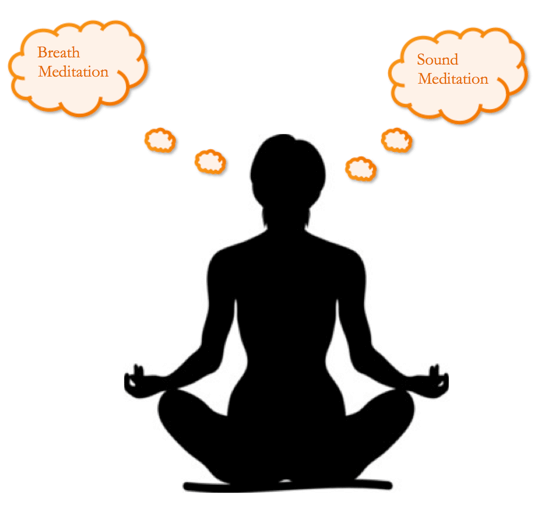(Spoiler Alert: We don’t know the answer.)
It’s an important question, right? Who wouldn’t want to be doing the best practice? From one perspective, we probably all believe we’re doing the best practice for us, otherwise, we’d be doing another practice!

Let’s unpack the notion of the ‘best practice.’ Identifying the ‘best’ practice would require: (1) classifying and differentiating practices and (2) establishing comparative efficacy of practices.
Differentiating and Classifying Practices
The ‘best practice’ assumes that there are underlying differences between practices. Only practices that are substantively different from others could claim to be the ‘best.’ Of course, on the surface, attending to the breath is different than doing a body scan, which is different than using sound as the mindfulness anchor. But perhaps these are merely superficial differences.

If we are to ever optimize mindfulness instructions, we must classify the different practices into underlying groups. We might do this by grouping practices according to the cognitive capacities they involve. Some practices may enhance certain cognitive functions more than other cognitive functions. Some practices might engage particular emotional capacities more than others. Researchers might look to classify and assess practices through the use of biomarkers. “Biomarkers” are objective, measurable qualities in the body that indicate health, disease, or the impact of a treatment. It is conceivable that different mindfulness practices might ultimately be grouped according to their neurobiological impacts. Some practices may preferentially recruit specific brain circuits or have specific neurobiological effects.
Richard Davidson – a pioneering scientist examining the effects of meditation on the brain –proposed a classification scheme for meditation practices. He and his colleagues published an influential paper in 2008 titled “Attention regulation and monitoring in meditation.” In that paper, they define meditation “as a family of complex emotional and attentional regulatory strategies developed for various ends, including the cultivation of well-being and emotional balance.”
While there are literally thousands of different meditation techniques, Davidson classified meditation practices into two main groups: focused attention and open monitoring. Both of these practices are familiar to Mindful Schools graduates.
Focused attention involves four keys characteristics:
1. Directing and sustaining attention on a selected object (e.g. the sensation of the breath)
2. Detecting mind wandering and distractions
3. Disengaging the attention from distractions and returning attention to the selected object
4. Cognitive reappraisal of the distraction
Open monitoring is characterized by three characteristics:
1. There is no explicit focus on particular objects
2. Nonreactive meta-cognitive monitoring
3. Nonreactive awareness of automatic cognitive and emotional interpretations of stimuli
This distinction between focused attention and open monitoring, however, is only one possible way of classifying meditation practices. In fact, Davidson and his colleagues have recently expanded on their 2008 paper with an augmented system of classification. More interdisciplinary collaboration between practitioners, scientists and scholars is yielding greater clarity about the underlying differences and similarities of diverse practices.
Comparative Effectiveness of Meditation Practices
Once meditation practices are adequately classified and differentiated, the next scientific task would be to test comparative efficacy between two or more practices. Evidence for one practice being better than another would typically come in the form of clinical trials where research participants are randomly assigned to one practice or another, tracked over a period of time, and assessed on key indictors of well-being. Virtually none of this type of research has been conducted yet.

Scientists will eventually ask similar questions of meditation practices. The question of a best practice becomes a lot more complicated: What meditation practice, taught by what kind of teacher, practiced for how long and how frequently, for what specific kind of distress?
If we had to make a prediction based on how psychotherapy research has unfolded, we probably won’t identify a universal best way to practice. Instead, practice recommendations will depend on many factors including practice goals, temperament, and the phase of practice. Further, the similarities between different practices probably outweigh their differences.
In other words, if you’re practicing one technique in a sincere way, you’re probably not missing out!
In the meantime, while all this is being explored, we do our best with what we know. For now, as a practitioner it’s important to be clear on at least one practice technique. Periodically, we can assess our practice. This doesn’t mean we become obsessive evaluators of our mindfulness practice. But we can ask: are we becoming more patient, more kind, more equanimous, more joyous? Do we struggle less internally – and cause less struggle for others? We can ask these questions periodically – perhaps every few months – without getting obsessive and trying to measure our progress after each mindfulness practice period (or after every mindful breath).
We wish you much goodness in your practice.
References:
Dahl, C.J., Lutz, A., & Davidson, R.J. (2015). Reconstructing and deconstructing the self: cognitive mechanisms in meditation practice. Trends in cognitive sciences, 19, 515-523. [Summary]
Lutz, A., Slagter, H.A., Dunne, J.D., & Davidson, R.J. (2008). Attention regulation and monitoring in meditation. Trends in cognitive sciences, 12, 163-169. [Article]
Paul, G.L. (1967). Strategy of outcome research in psychotherapy. Journal of Consulting Psychology, 31, 109–118. [Summary]